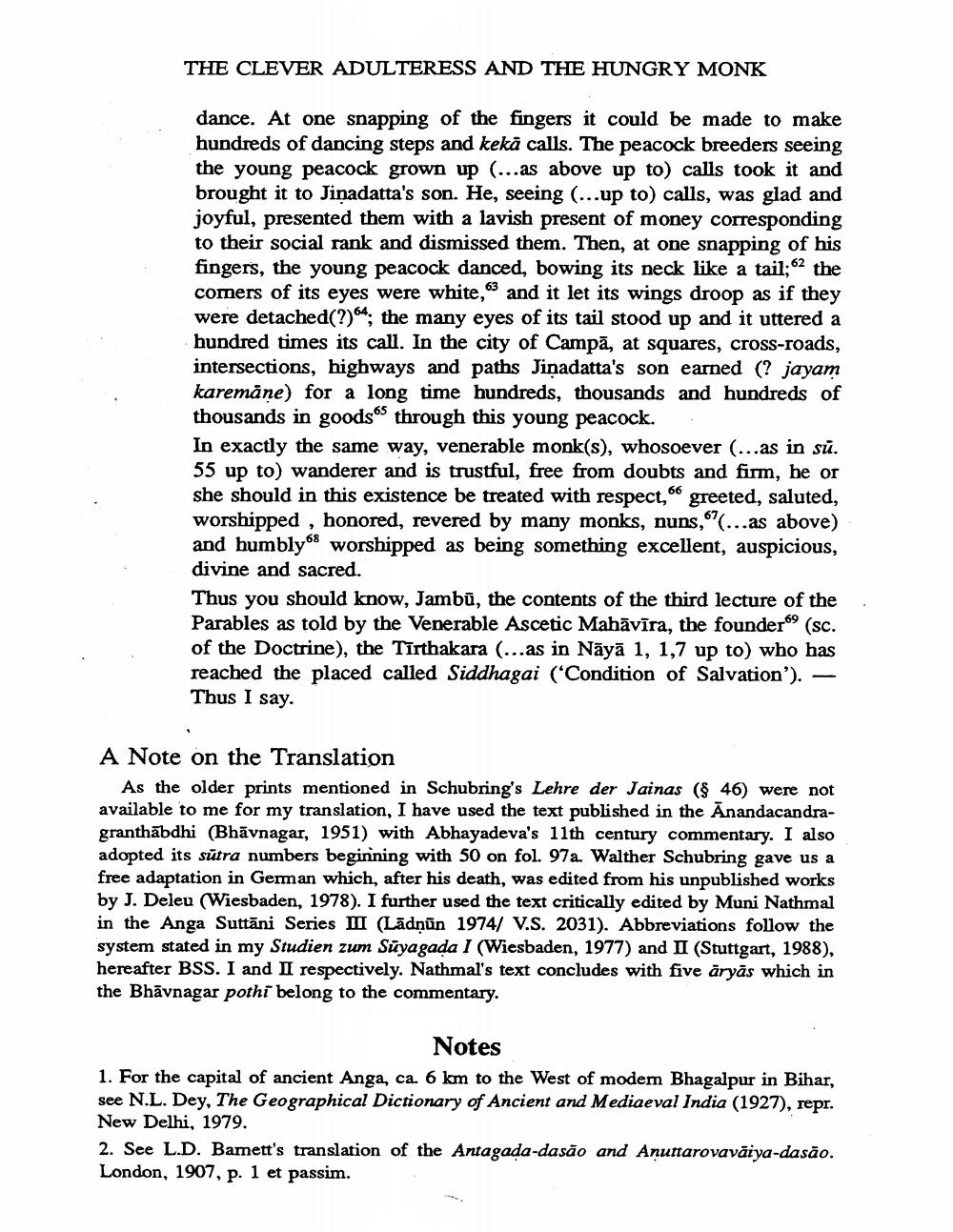________________
THE CLEVER ADULTERESS AND THE HUNGRY MONK
dance. At one snapping of the fingers it could be made to make hundreds of dancing steps and kekā calls. The peacock breeders seeing the young peacock grown up (...as above up to) calls took it and brought it to Jipadatta's son. He, seeing (...up to) calls, was glad and joyful, presented them with a lavish present of money corresponding to their social rank and dismissed them. Then, at one snapping of his fingers, the young peacock danced, bowing its neck like a tail;62 the comers of its eyes were white,63 and it let its wings droop as if they were detached(?)64; the many eyes of its tail stood up and it uttered a hundred times its call. In the city of Campā, at squares, cross-roads, intersections, highways and paths Jinadatta's son earned (? jayam karemane) for a long time hundreds, thousands and hundreds of thousands in goods through this young peacock. . In exactly the same way, venerable monk(s), whosoever (...as in su. 55 up to) wanderer and is trustful, free from doubts and firm, he or she should in this existence be treated with respect, greeted, saluted, worshipped , honored, revered by many monks, nuns, 7(...as above) and humbly68 worshipped as being something excellent, auspicious, divine and sacred. Thus you should know, Jambū, the contents of the third lecture of the Parables as told by the Venerable Ascetic Mahāvīra, the founder (sc. of the Doctrine), the Tirthakara (...as in Nāyā 1, 1,7 up to) who has reached the placed called Siddhagai ("Condition of Salvation'). — Thus I say.
A Note on the Translation
As the older prints mentioned in Schubring's Lehre der Jainas (8 46) were not available to me for my translation, I have used the text published in the Anandacandragranthābdhi (Bhāvnagar, 1951) with Abhayadeva's 11th century commentary. I also adopted its sūtra numbers beginning with 50 on fol. 97a. Walther Schubring gave us a free adaptation in German which, after his death, was edited from his unpublished works by J. Deleu (Wiesbaden, 1978). I further used the text critically edited by Muni Nathmal in the Anga Suttāni Series III (Lādnūn 1974/ V.S. 2031). Abbreviations follow the system stated in my Studien zum Süyagada I (Wiesbaden, 1977) and II (Stuttgart, 1988), hereafter BSS. I and I respectively. Nathmal's text concludes with five āryās which in the Bhāvnagar pothi belong to the commentary.
Notes 1. For the capital of ancient Anga, ca. 6 km to the West of modern Bhagalpur in Bihar, see N.L. Dey, The Geographical Dictionary of Ancient and Mediaeval India (1927), repr. New Delhi, 1979. 2. See L.D. Bamett's translation of the Antagada-dasão and Anuttarovavāiya-dasão. London, 1907, p. 1 et passim.




